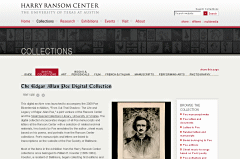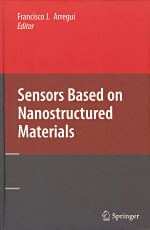 1. Temperature Sensor Education
1. Temperature Sensor Education
Burns Engineering has been in the temperature measurement business for a very long time. Now, the company has figured out an additional way to share their expertise: a series of Web sessions about temperature sensors that it's calling RTDology. The RTDology Web site contains links to the previous RTDology Web session's slides (how to choose between a thermocouple or an RTD), links to a plethora of technical articles, and the ability to vote for the next topic to be discussed. If this sounds interesting to you, be sure to visit.
 2. Science Blog
2. Science Blog
Actually, that title is a misnomer. ScienceBlogs.com is, in reality, a collection of some 75 blogs, each devoted to a specific area of scientific research. The authors—scientists, academics, and professional writers—are selected by invitation only and, once blogging, get editorial freedom. The result is a collection of interesting, educational blogs, written in a variety of styles, and covering a truly staggering number of topics. If you're in the mood for a science fix and the other online science outlets aren't slaking your thirst for knowledge, then I'd suggest you go and have a browse.
 3. Edgar Allen Poe Online
3. Edgar Allen Poe Online
The Harry Ransom Center at the University of Texas at Austin is making digital images of all of its Poe manuscripts and letters-as well as a slew of other related materials-available online so that interested parties (academics, enthusiastic amateurs, rabid Poe fans, to name but a few) can view the material. Even better, the Edgar Allen Poe Collection is searchable. (The letters are accompanied by transcripts, which is a good thing because I could read about four words in ten when I tried to decipher the handwriting in one of them.) Now you can rummage through this trove of literary history whenever you want!
New to Bookshelves
 Sensors Based on Nanostructured Material
Sensors Based on Nanostructured Material
Editor: Francisco J. Arregui
Publisher: Springer
ISBN: 978-0-387-77752-8
Page count: 326
This hardcover book gathers together much of the literature that exists on fabricating sensors using nanostructured materials. As such, is it of interest to both those working to create such devices and those who are interested in seeing what kinds of current, real, and tested sensors made from nanostructured materials exist.
Divided into ten chapters, the book starts with an introduction that discusses the growth of nanotechnology and the impetus behind this book in particular. Chapter 2 deals with carbon nanotube and fullerene sensors; Chapter 3 deals with noncarbon nanotubes, focusing on hydrogen sensors that are based on titanium dioxide; and Chapter 4 deals with nanowires, nanobelts, and other novel nanostructures. Chapter 5 collects information on controlling transduction mechanisms at the nanoscale using metal oxides and semiconductors; Chapter 6 covers quantum dots for sensing; and Chapter 7 focuses on nanostructured magnetic sensors. Chapter 8 covers encapsulated probes; Chapter 9 discusses optical fiber sensors based on nanostructured coatings; and Chapter 10 is concerned with nanostructured flexible materials.
Because the material in the book is drawn from academic journals and is intended for an academic (or at least research-minded) audience, it is, of necessity, rather dense. There is a great deal of information packed into the pages of this book; the clear text is supplemented with bountiful illustrations and figures and an extensive bibliography ends each chapter. Amid all the nanotechnology hype, this book presents the current reality of sensors based on nanostructured materials.